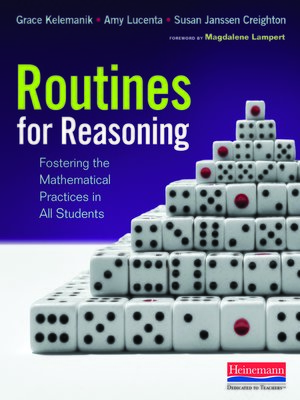Routines for Reasoning
ebook ∣ Fostering the Mathematical Practices in All Students
By Grace Kelemanik

Sign up to save your library
With an OverDrive account, you can save your favorite libraries for at-a-glance information about availability. Find out more about OverDrive accounts.
Find this title in Libby, the library reading app by OverDrive.



Search for a digital library with this title
Title found at these libraries:
| Loading... |
"Routines for Reasoning will help teachers think a lot harder about what the mathematical practices mean...This book should be on every mathematics teacher's bookshelf."
- Elham Kazemi, Geda and Phil Condit Professor in Mathematics Education, University of Washington; coauthor of Intentional Talk
"This book is a must read for every K-12 teacher serious about shifting the nature of learning mathematics in the next decade."
-Timothy D. Kanold, Former Director of Mathematics and Science, and School Superintendent, Adlai E. Stevenson HSD 125
Routines can keep your classroom running smoothly. Now imagine having a set of routines focused not on classroom management, but on helping students develop their mathematical thinking skills. Routines for Reasoning provides expert guidance for weaving the Standards for Mathematical Practice into your teaching by harnessing the power of classroom-tested instructional routines.
Grace Kelemanik, Amy Lucenta, and Susan Janssen Creighton have applied their extensive experience teaching mathematics and supporting teachers to crafting routines that are practical teaching and learning tools, including:
Each routine provides a familiar, accessible structure that supports repeated use until the steps to follow, thinking skills to employ, and questions to ask become automatic-enabling all students to engage more fully in learning opportunities while building crucial mathematical thinking habits.
"Teaching students to think and reason is perhaps the greatest challenge we face as math educators," the authors remind us, "and these routines provide clear pathways to do so." Far beyond simply a collection of strategies, Routines for Reasoning provides significant support for getting started with these routines, incorporating them into the rhythm of your classroom, and ultimately building toward student independence.





